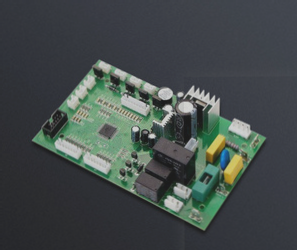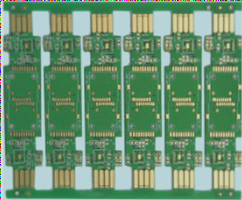In PCB production, the process plays a crucial role. The typical processes include OSP, immersion gold, gold plating, and tin spraying. Among these, tin spraying is the most common process in PCB manufacturing, and it is widely known. The tin spraying process is categorized into “leaded” and “lead-free” types. What connects the two, and what are the differences? Let’s delve into this topic today.
1. Development History: “Lead-free” technology evolved from “lead-based” processes. Since the 1990s, countries like the United States, Europe, and Japan have implemented regulations restricting lead use in industrial applications, prompting the development of lead-free soldering materials and related technologies.
2. Performance Differences
1. Solderability

1. **Melting Point and Solderability**
The melting point of the lead-free process is 218°C, whereas the melting point of lead-tin solder is 183°C. Lead-free solder exhibits better solderability compared to lead-tin solder. The leaded process has relatively lower robustness and is more prone to soldering defects, such as cold joints. However, due to the lower melting temperature of lead-based solder, thermal damage to electronic components is less significant, and the PCB surface tends to appear brighter.
2. **Cost Difference**
In the lead-free process, the tin bars used in wave soldering and the tin wires used for manual soldering have increased costs by approximately threefold. The cost of solder paste for reflow soldering has also risen by around two times.
3. **Environmental Impact**
Lead is a toxic substance that poses long-term risks to human health and the environment. Despite its lower cost and brighter surface appearance, the use of lead has been increasingly restricted due to environmental protection policies. The primary concern is the wastewater produced by the PCB lead-based process, which contains lead. Once discarded, whether buried or incinerated, the lead component eventually returns to the environment, leading to significant environmental contamination and harm to human health.
With growing awareness of environmental issues, the Chinese government has introduced stricter regulations. Since January 1, 2018, the “Environmental Protection Law” has been in effect, imposing environmental taxes on all enterprises and demonstrating the country’s commitment to structural reform and transformation. Similarly, international regulations, such as the EU’s environmental directives, require compliance for access to European markets. Failure to meet EU certification standards means losing market share in Europe.
These domestic and international regulations have forced many local PCB factories to shut down. The shift to lead-free production represents a significant challenge for PCB manufacturers, as it requires improvements in both quality and technical capabilities. Successfully implementing a lead-free process involves more than just replacing production equipment—it also demands enhanced employee training, quality management, and other operational adjustments, which can increase production costs.
Ultimately, by embracing the ecological benefits of lead-free technology, PCB companies can enhance their core competitiveness. Continuous innovation will enable the industry to meet environmental protection standards more efficiently and reduce operational costs. Moving forward with more environmentally friendly processes is essential for the PCB industry to remain competitive. As such, transitioning away from the lead-based process has become an inevitable trend for PCB manufacturers.
1. Development History: “Lead-free” technology evolved from “lead-based” processes. Since the 1990s, countries like the United States, Europe, and Japan have implemented regulations restricting lead use in industrial applications, prompting the development of lead-free soldering materials and related technologies.
2. Performance Differences
1. Solderability

1. **Melting Point and Solderability**
The melting point of the lead-free process is 218°C, whereas the melting point of lead-tin solder is 183°C. Lead-free solder exhibits better solderability compared to lead-tin solder. The leaded process has relatively lower robustness and is more prone to soldering defects, such as cold joints. However, due to the lower melting temperature of lead-based solder, thermal damage to electronic components is less significant, and the PCB surface tends to appear brighter.
2. **Cost Difference**
In the lead-free process, the tin bars used in wave soldering and the tin wires used for manual soldering have increased costs by approximately threefold. The cost of solder paste for reflow soldering has also risen by around two times.
3. **Environmental Impact**
Lead is a toxic substance that poses long-term risks to human health and the environment. Despite its lower cost and brighter surface appearance, the use of lead has been increasingly restricted due to environmental protection policies. The primary concern is the wastewater produced by the PCB lead-based process, which contains lead. Once discarded, whether buried or incinerated, the lead component eventually returns to the environment, leading to significant environmental contamination and harm to human health.
With growing awareness of environmental issues, the Chinese government has introduced stricter regulations. Since January 1, 2018, the “Environmental Protection Law” has been in effect, imposing environmental taxes on all enterprises and demonstrating the country’s commitment to structural reform and transformation. Similarly, international regulations, such as the EU’s environmental directives, require compliance for access to European markets. Failure to meet EU certification standards means losing market share in Europe.
These domestic and international regulations have forced many local PCB factories to shut down. The shift to lead-free production represents a significant challenge for PCB manufacturers, as it requires improvements in both quality and technical capabilities. Successfully implementing a lead-free process involves more than just replacing production equipment—it also demands enhanced employee training, quality management, and other operational adjustments, which can increase production costs.
Ultimately, by embracing the ecological benefits of lead-free technology, PCB companies can enhance their core competitiveness. Continuous innovation will enable the industry to meet environmental protection standards more efficiently and reduce operational costs. Moving forward with more environmentally friendly processes is essential for the PCB industry to remain competitive. As such, transitioning away from the lead-based process has become an inevitable trend for PCB manufacturers.




